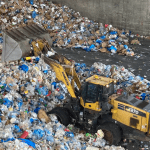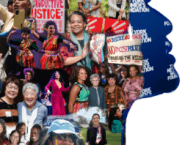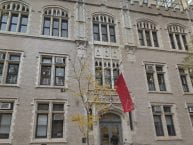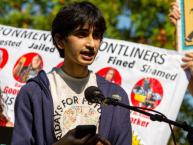We went on a tour of the Sims Municipal Recycling Center located in Brooklyn NYC which is a Materials Recovery Facility or MRF. In simple terms, they take recyclable materials from our green and blue recycling bins and sort them into bales and sell them to companies that use the materials like glass, metal, cardboard/paper and plastic to turn them into more products. If you’re wondering how the NYC recycling process works, it’s fairly simple. Homes have access to 3 or 4 bins: black bins for landfill trash, green for paper and cardboard goods, and a blue one for metals, glass bottles, cans, hard plastic, and cartons. Some buildings have access to a brown bin which is for food scraps to compost.
Guiding us through the facility was Karen Napolitano, the education and outreach coordinator at SIMS Recycling Center. After walking through their learning center, she told us about recycling and sorting through the facility and how metal, glass, cardboard/paper, and plastic. Surprisingly, anything that is 50% or more metal can be recycled, delicate glass like light bulb glass can’t be recycled even though housing and car glass can, greasy pizza boxes can be recycled, and only rigid plastics can be recycled. Plastic wrap, plastic bags, and other thin and filmy plastic coming from NYC is usually incinerated because that is one of the only ways to get rid of it. She also told us about how different materials are sorted when they are heaped into two bins (blue & green), showed us the sorting machine (image above) and how it had a complex array of near-infrared sensors, filters, air jets, conveyor belts, and more to make this facility run 24/6.
One important distinction was the differences between the many types of plastic and that only a few can be recycled by their facility. We learned that the statistics that only 5-6% of plastic is recycled is only accurate when you have context. When an EPA study was conducted, they calculated that about 9% of all plastic produced including plastic items like toilet seats, printers, tables, insulation, etc. These are items that are used for more than one year, and are being factored in. But, the percentage of single-use plastic that was recycled vs. thrown into landfills or incinerated isn’t known because there is no good way of collecting data on how much plastic companies use, we can only guess. Learning about the inner workings of this facility taught me how complex recycling is. As much as I recycle, learning how low the percentage of items recycled overall makes me wonder if people would care more if they could visit this facility.
Read more




























